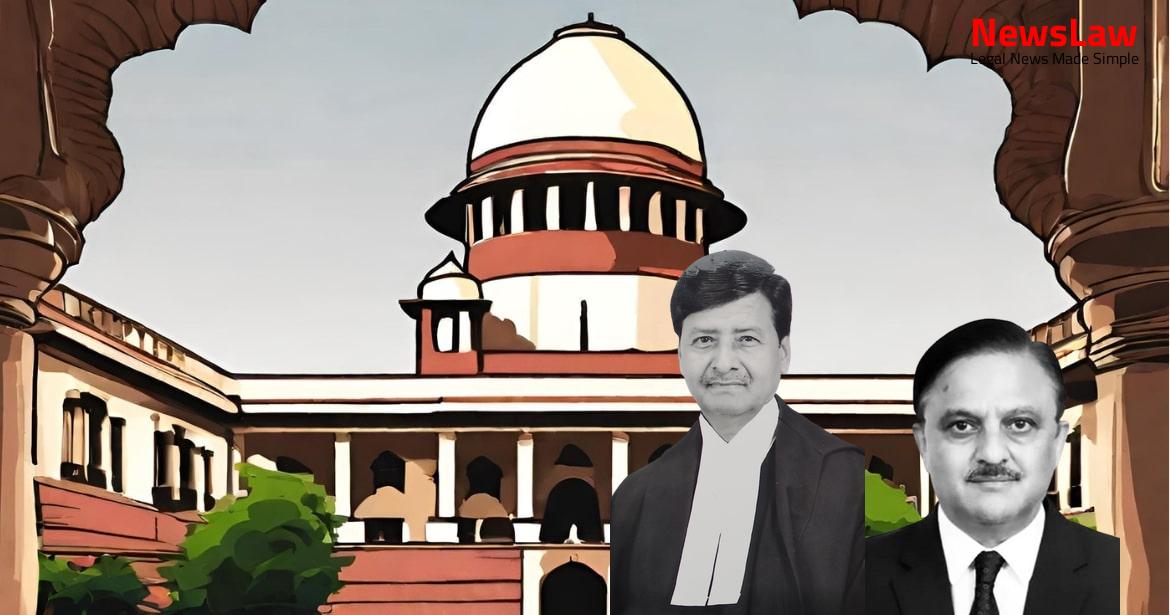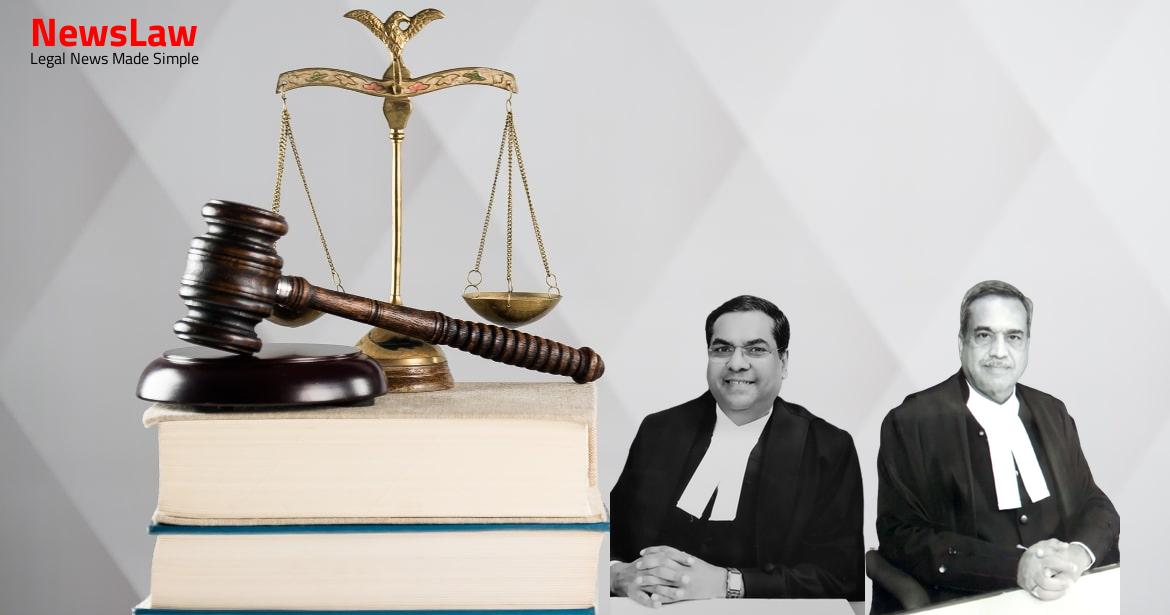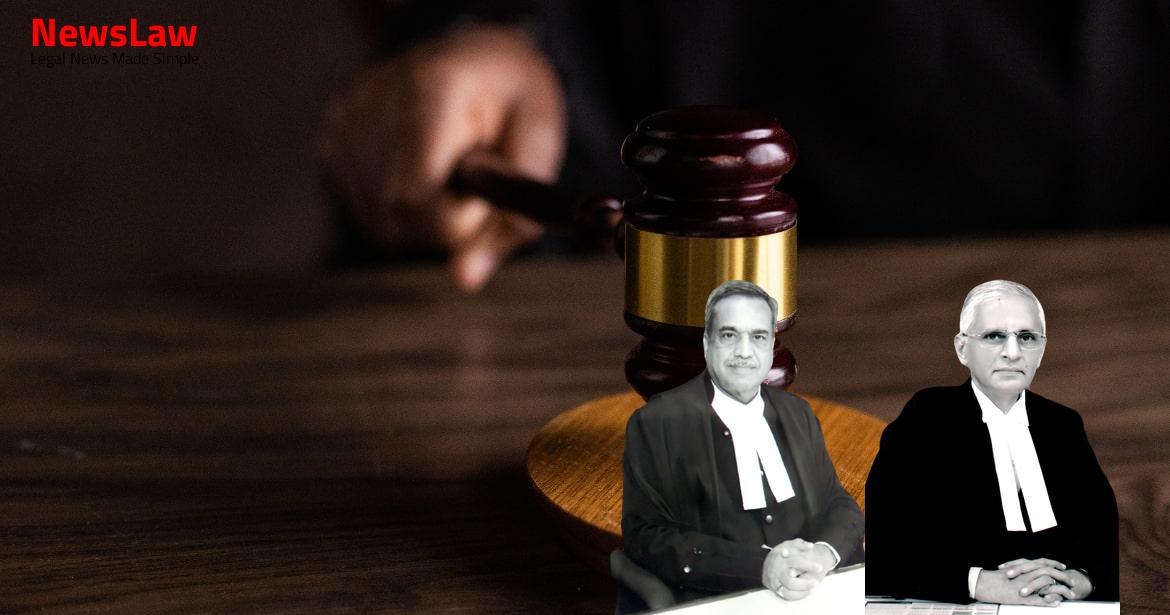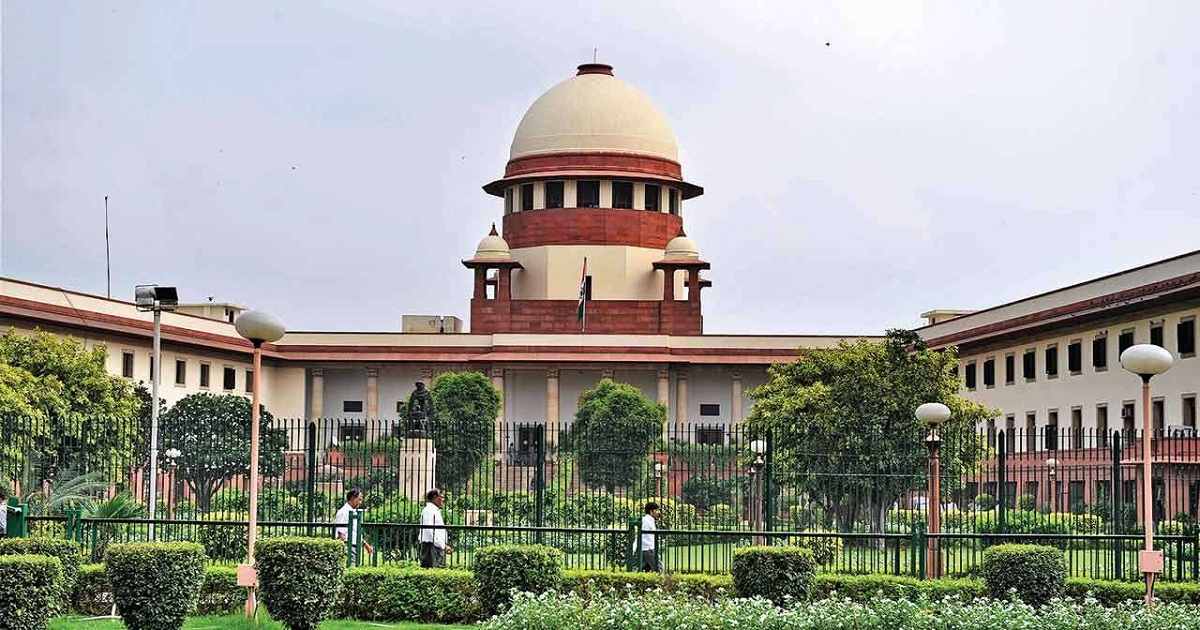Discover the detailed examination of tenant rights and eviction proceedings under the Property Act in our latest blog. The court’s legal analysis provides insights into deemed tenancy, notifications of vacant properties, and the responsibilities of landlords and tenants. Dive into the complexities of property law to understand the intricacies of this case.
Facts
- The District Magistrate held that the first respondent was inducted as a tenant by Dhruv Narayan Tripathi in November 1975.
- The original owners did not object to this tenancy arrangement.
- The appellant claims ownership of the premises through a sale deed dated March 13, 1994, executed by the original owners.
- A writ petition against the District Magistrate’s decision was rejected by the High Court.
- The first respondent was found to be a tenant in continuous possession of the disputed premises based on the agreement dated November 15, 1975.
Also Read: Recovery of Misappropriated Temple Funds: Court’s Legal Analysis
Arguments
- The appellant’s counsel argued that Dhruv Narayan Tripathi had no authority to induct the first respondent as a tenant on behalf of the predecessors-in-title of the petitioner.
- It was submitted that Dhruv Narayan Tripathi was the tenant inducted by the predecessors-in-title of the appellant.
- The disputed premises were vacant on 5 July 1976, according to the submission.
- The petitioner purchased the property in 1994.
- The writ petition before the Allahabad High Court was in 1997 and decided on 9 October 2009, with the current appeal in 2011.
- Citing case law such as Achal Misra v. Rama Shanker Singh & Ors., Ram Murti Devi v. Pushpa Devi & Ors., and Harish Tandon v. Addl. District Magistrate, Allahabad, U.P. & Ors., the appellant’s counsel emphasized that in the last 27 years, the appellant has not received any benefit from the disputed premises.
- The first respondent has been in possession of the disputed premises since 1975 and has been paying rent even prior to 5 July, 1976.
- It would be unjust to compel the appellant to file a suit for eviction 27 years after she purchased the disputed premises.
- The first respondent has been regularly depositing rent in the Court of Civil Judge by utilizing Section 30(1) of the Act, and commits to deposit any outstanding rent.
Also Read: Determining Seniority in Delayed Appointments: Legal Analysis
Analysis
- Section 12 of the Act deals with the concept of deemed vacancy in certain cases.
- The Addl. City Magistrate concluded that without evidence from the appellant’s predecessors-in-title, it is difficult to accept that the first respondent continued to possess the property without consent since 1975.
- The Harish Tandon case was deemed irrelevant to the current appeal.
- The appellant alleged that a document was fabricated in the rejoinder.
- Section 21 of the Act provides an option depending on the circumstances.
- The Addl. City Magistrate’s decision was found to be correct by the High Court.
- First respondent deemed a tenant by virtue of Section 14 of the Act due to possession with original owners’ consent in 1976.
- Addl. City Magistrate’s finding was that the first respondent was in possession without objection from the predecessors-in-title since 1975.
- Agreement dated 15 November, 1975, was relied upon by the first respondent, claiming to be an authorized tenant.
- Section 20 of the Act needs to be considered by the appellant for eviction of the first respondent.
- The Amendment Act of 1976 provided protection to first respondent as a tenant under Section 14.
- The first respondent’s reliance on the agreement at Annexure R-4 was mentioned in the counter.
- The inference drawn by the Addl. Magistrate was that the first respondent was inducted with the consent of the predecessors-in-title.
- No evidence produced by the petitioner to show objections from original owners to first respondent’s tenancy from 1975 to 1994.
- Section 12(4) of the Act deems any building or part thereof vacant if the landlord or tenant ceases to occupy it.
- Under Section 12(2), in non-residential buildings, allowing a non-family member to become a partner in the tenant’s business results in the tenant being deemed to have ceased to occupy the building.
- Clause (b) of Section 12(1) states that a tenant ceases to occupy the building if they allow a non-family member to occupy it.
- Section 16(a) empowers the District Magistrate to require a landlord to let a vacant building to a specified person.
- Section 14 deals with the regularisation or occupation of existing tenants, ensuring their status as authorized licensees or tenants if certain conditions are met.
- Order notifying vacancy under section 12 of the Act can be challenged through a writ petition.
- Alternatively, the order can be challenged after an allotment is made by using the remedy under section 18 of the Act.
- The appeal lacks merit
- First respondent must regularly pay rent for the disputed premises
- First respondent filed Misc. Case No 284/70/04 in the Court of Civil Judge at Kanpur Nagar under Section 30 of the Act
- Previous decisions cited have no relevance to the current case
- Issue of unlawful subletting addressed
Also Read: Legal Analysis in Assault and Homicide Case
Decision
- First respondent directed to deposit all arrears of rent up to 31 August 2021 within six weeks
- Continue regularly depositing rent in the proceedings
- Petitioner can apply for withdrawal of rent amount as per section 30(3) of the Act
- Eviction proceedings to be given priority if filed by petitioner due to deprivation since 1994
- Appeal dismissed, no merit found
- First respondent can also pay the amount to the petitioner
Case Title: GEETA GUPTA Vs. RAMESH CHANDRA DWIVEDI (2021 INSC 456)
Case Number: C.A. No.-004750-004750 / 2011



